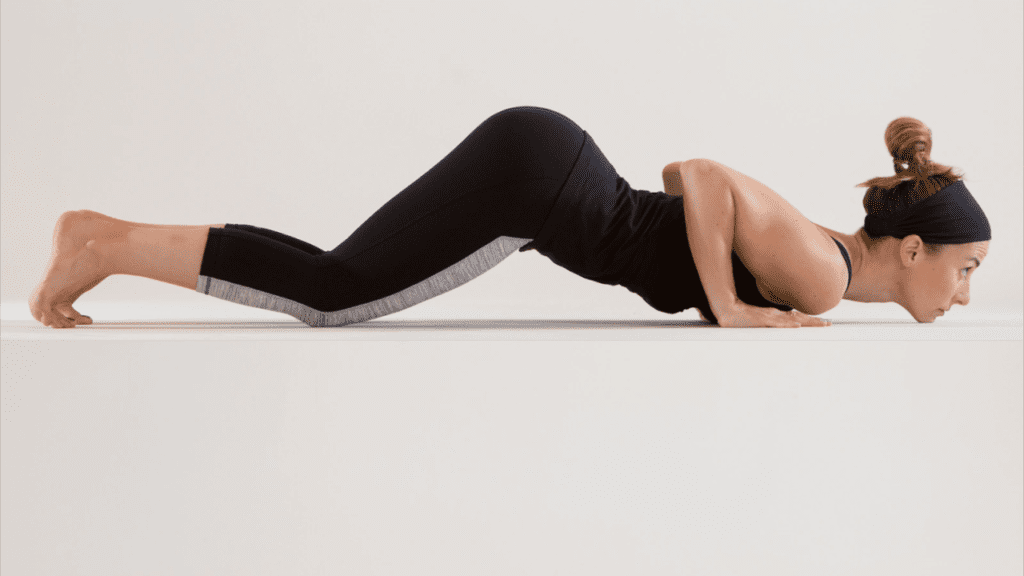Embarking on a yoga adventure means coming across poses that no longer simply enhance flexibility but also build strength and stability. The 8 Point Yoga Pose, additionally known as Astanga Namaskara or Eight-Limbed Salutation, is a central part of yoga practice that offers those benefits. Ideal for beginners and pro practitioners alike, this pose involves eight factors of your body touching the floor, aligning and stabilizing your center and limbs. Let’s dive into how to perform this pose, its blessings, and a few recommendations to make the most of your practice.

What is the eight Point Yoga Pose?
The eighth Point Yoga Pose is a crucial aspect of Sun Salutations, particularly within the extra physically demanding sequences. It serves as a transitional pose and a moment of electricity-constructing stillness. The name derives from the 8 parts of the frame that touch the ground: chin, chest, fingers (2), knees (2), and toes (2).
warmup before 8 Point Yoga Pose
Warming up earlier than appearing in the eighth Point Yoga Pose is crucial to putting together your body and saving you from injuries. Start with gentle stretching and sporting activities to lighten up the muscle groups, especially focusing on the arms, shoulders, and back. Simple poses like Cat-Cow, gentle spinal twists, and a couple of minutes in Child’s Pose can boom blood glide and versatility, making the transition into the 8-Point Yoga Pose smoother and safer. This preparatory section ensures that your body is sufficiently warmed up to address the physical needs of the pose.
Step-by-Step Guide to Eight-Point Yoga Pose
- Start in a Plank Position: Begin in a popular plank, ensuring your shoulders are without delay over your wrists and your body is in an instant line.
- Lower Your Knees: Gently lower your knees to the floor, keeping your hips elevated.
- Lower the Chest and Chin: Slowly carry your chest and chin ahead and down, touching them to the floor. Your hips should nevertheless be slightly multiplied.
- Touch the Ground with Eight Points: Ensure that your two fingers, two knees, chest, chin, and two ft’s toes are touching the floor.
Benefits
- Strengthens the Upper Body: This pose intensely works the fingers, shoulders, and chest.
- Improves Flexibility: It enhances the power of the returned and backbone.
- Builds Mental Focus: Holding the pose calls for concentration and calmness, helping mental clarity.
Curious about more yoga poses? Check out our detailed guide on “Yoga Duck Pose” for another enriching addition to your practice!
Common Mistakes to Avoid
- Sagging Hips: Keep your hips barely increased to avoid strain on your lower lower back.
- Misalignment: Ensure your arms are straight away beneath your shoulders when in plank function to keep the right shape.
Modifications for Beginners
If you discover the equal old pose difficult, attempt those modifications:
- Use a Yoga Mat for Support: Place a folded yoga mat or a towel under your knees and chest for delivered cushioning.
- Elevate the Hands: Place yoga blocks below your arms to ease the pressure in your higher body.
Integrating the 8-Point Yoga Pose into Your Routine
Regular practice of the 8-Point Yoga Pose can be integrated into numerous yoga sequences:
- Warm-Up: Use it at some stage in your heat-up routine to prepare the frame for added complicated poses.
- Sun Salutation: Incorporate it into your Sun Salutation sequences to beautify power and versatility.
Curious about more yoga poses? Check out our detailed guide on “Rebound Pose Yoga” for another enriching addition to your practice!
Tips for Deepening the Pose
- Focus on Breath: Coordinate your actions together with your breath, inhaling as you decrease down and exhaling as you maintain the pose.
- Increase Hold Time: Gradually increase the time you maintain the pose to construct endurance and energy.
Variations to Try
- With Extended Arms: Instead of placing your hands directly under your shoulders, extend them forward. This variation increases the stretch across your shoulders and chest, offering a more intense engagement of the upper body.
- Elevated 8-Point Pose: For those looking to increase difficulty, elevating your feet on a stable surface like a yoga block or a step can add an extra layer of challenge to the core and upper body muscles.
The Spiritual Aspect of the Eight-Point Yoga Pose
This pose isn’t just a bodily exercise; it has a nonsecular element as properly, symbolizing give up and humility. The act of touching eight points to the ground can be visible as a gesture of honoring the earth and grounding oneself spiritually.
Incorporating Props for Enhanced Practice
Using props together with yoga blocks or straps assists you in holding the right alignment and deepening the pose without strain, making it extra powerful and enjoyable.
Curious about more yoga poses? Check out our detailed guide on “Pendant Pose Yoga ” for another enriching addition to your practice!
Conclusion
- Promotes Balance and Strength: Regular practice can drastically decorate your physical and mental stability.
- Suitable for All Levels: Whether you are an amateur or an advanced yogi, this pose gives several benefits.
- A Step Towards a Healthier Lifestyle: Integrating this pose into your habits can result in an extra balanced and wholesome way of life.
The 8-Point Yoga Pose is a simple but effective tool for your yoga exercise, helping to strengthen the body, calm the mind, and deepen your connection to the earth. Embrace this pose with staying power and exercise, and watch because it transforms your yoga revel in!
Curious about more yoga poses? Check out our detailed guide on “Irish Yoga Poses ” for another enriching addition to your practice!